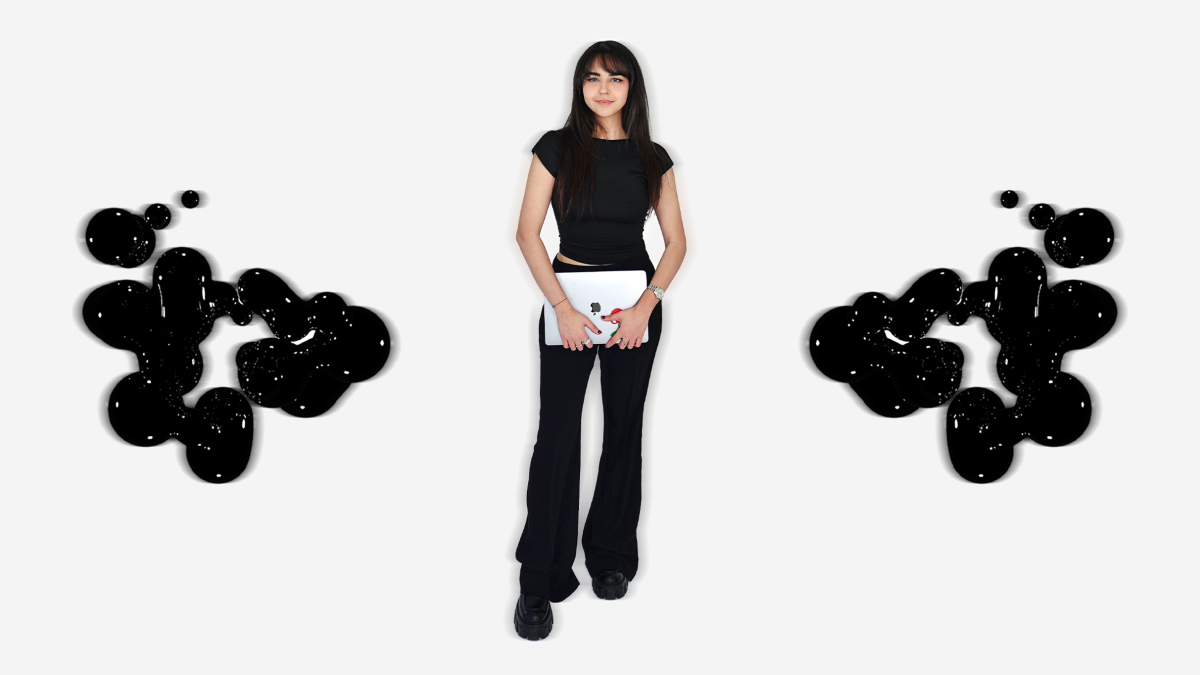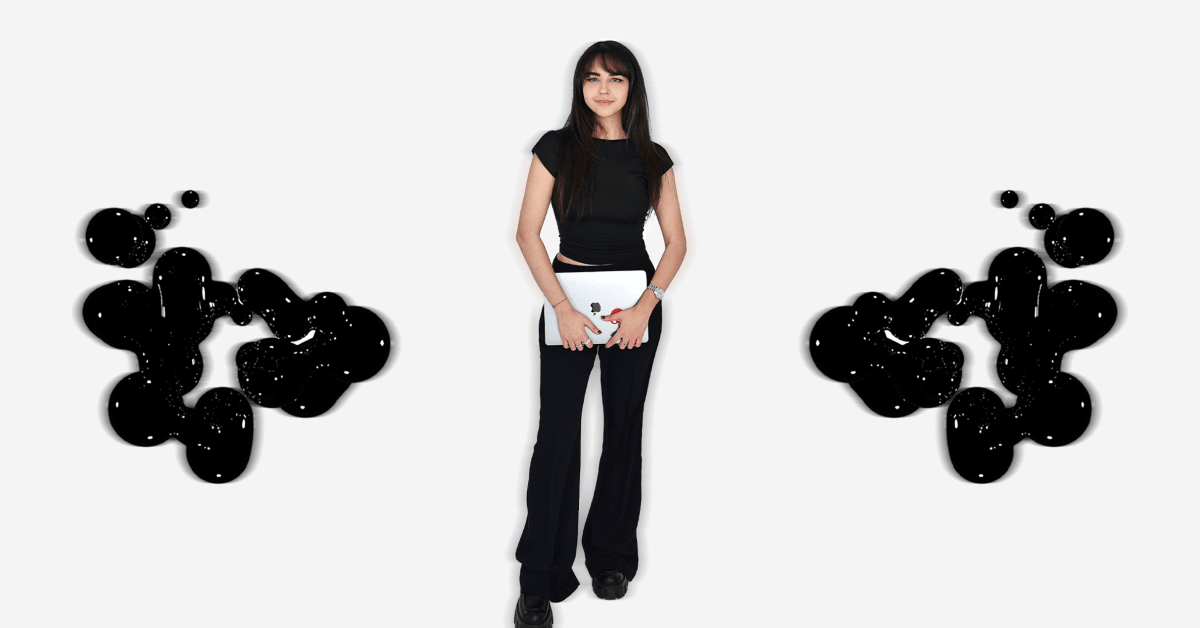

For Kelly Badak, the primal beats and retina-searing lasers of raves are more than just a backdrop for partying. They are the raw material fueling her creative process.
Armed with a vast mental sketchbook unrestricted by spiral binding, Badak is a graphic designer translating the palpitating energy around her into digital brushstrokes for clients. She has garnered hundreds of thousands of followers on social media, where she unearths rare fonts that harken back to DIY punk and rave posters of yesteryear—a lost art after the advent of the digital era.
After moving from Miami to The Big Apple three years ago, Badak enrolled in the Tribeca-based New York Law School, where she's studying IP and trademark law. Ahead of her graduation in May, she's studying for the grueling New York State bar exam and managing the balancing act of driving the business of her own creative design agency.
It's a familiar struggle for many in her field. Client revisions, creative roadblocks and the gnawing pressure to deliver fresh ideas can leave even the most passionate designer feeling deflated. But for Badak, the frenetic energy of a rave is her antidote.
Back in her home studio, the afterglow of the rave galvanizes her creativity. The kaleidoscopic visuals become a mesmerizing flow chart in her mind's eye and the faces—a mosaic of unfiltered joy—become the bedrock for her next project's mood board.
Badak traces her love of dance music back to 2013, when she watched Avicii and Hardwell rock the stages of Ultra Music Festival in performances now considered iconic. Over a decade later, she prefers the more ferocious, industrial sound of techno music, which she finds "soothing" while she works because it facilitates a full-blown descent into a stream of consciousness without the distraction of lyricism.
A lot of her work, she says, is inspired by the visuals she sees at shows. A performance by South African dance music icon Black Coffee was a particular touchstone, his sultry rhythms weaving a latticework with live visuals in ways she'd never seen. The same goes for a show headlined by the renowned Âme duo, whose visuals featured a spinning chrome ball that now serves as a wellspring for her own aesthetic.
Badak isn't just replicating what she sees—she's attempting to capture the uninhibited movement and shared euphoria we all feel at raves but can't quite explain to our families at Thanksgiving dinner. And in that sense, her work is a testament to the transformative power of rave culture, a chrome-plated bridge between the unrestrained world of electronic dance music and the structured domain of graphic design.
Scroll to Continue
Recommended Articles
We caught up with Badak to peer through the looking glass of her creative process. In her own words, here are some creative tips for graphic designers to find inspiration in their work from the weird and wonderful world of electronic music.
Immerse yourself within the atmosphere
Next time you're at a rave, try to study the visual effects and lighting and notice how it connects and matches with the music. Lighting designers and VJs inspire me so much.
Appreciate the visuals
There's nothing wrong with recording at a show for the sake of the beauty of the moment. I record mainly for the visuals to draw inspiration from later on when I'm working on my art.
Try to recreate one visual as practice from a show you attend
Really, the best way to improve your work is to practice. By recreating an artwork, with the addition of your own personal touch, you'll be able to really hone the skills you already possess and gain an understanding of the original artist's thought process.
Practice by creating visual narratives
Every track tells a story to evoke a certain emotion from its listeners. Try to come up with a design that complements a song you enjoy listening to by translating the emotions you feel into your artwork.
Appreciate the sub-genres of EDM
Whether it's industrial techno, trance, gabber, hardstyle or house, understanding the differences will help you design artwork more effectively for events regarding that specific genre. Pay attention to frequent color schemes, motifs and recurring imagery in the music's artwork.
Gather inspiration from event flyers
Take notice of their use of fonts, color, imagery and overall tone of the artwork and how it aligns with the genre of music it's promoting. There are tons of websites with archived rave flyers from the 90s that I use to influence my work.
Stay in tune with trends
Keep up with relevant blogs, social media accounts and other artists to stay informed about rising trends in the works and visual artworks of DJs. I like to attend shows regularly to observe how both DJs and their visual artists are improving and upgrading their work.
Stay true to your own style
It's important to be innovative in the work you produce, and it's equally as important to stay authentic to the energy that the music emanates. Try to avoid clichés and trite artwork elements, and aim to create artwork that resonates with its intended audience with the addition of your own personal flair.
